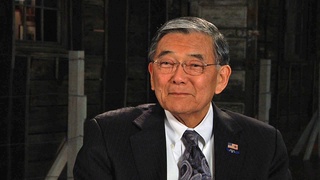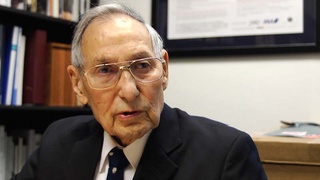Interviews
442nd’s contribution to redress
We succeeded to the extent that if it wasn’t for the 442nd there’d have been no redress. Redress was not a judicial issue no matter what anybody says. It would have never got to the Supreme Court, it a never been overruled. Maybe it should have gone back, but that isn’t in the works and isn’t the books and that isn’t the way the judicial system works. According to the judicial system, you’d have to have a similar case brought up all over again to go through the courts, and there’s not going to be another similar case. So it becomes a political issue.
And if it’s a political issue passed by Congress, then how much blood you shed and things like that count. If it wasn’t for the record of the 100th, 442nd, do you think Congress would have ever passed that? Nah. You’d have never won it on a pure logic, judicial reasoning, see. All the hard-liners would have held fast, but they can’t fight the losing of blood. And even the hard-liners when you get down to it, they say yeah, you’d be willing to Europe and fight and shed blood, but you wouldn’t fight the Japanese, see. But when you tell them about the MIS, then they have to give in, see. So yes, I say the contributions of the veterans from World War II has helped, but it hasn’t solved the problem.
Date: August 28, 1995
Location: California, US
Contributed by: Watase Media Arts Center, Japanese American National Museum
Explore More Videos

525 Quartermaster Corps
(1919-2020) Member of the 1800th Engineering Battalion. Promoted Japan-U.S. trade while working for Honda's export division.

Fort McClellan soldiers
(1919-2020) Member of the 1800th Engineering Battalion. Promoted Japan-U.S. trade while working for Honda's export division.


Going to camp with the Terminal Island people
(1927-2010) Political Activist

The lawsuit set the standard for restoring people’s rights
(1927-2010) Political Activist


Interned at age fifteen, I saw camp as an adventure
(1927-2010) Political Activist

Beginnings of CWRIC
(b. 1931) U.S. Former Secretary of Transportation


The last hurdle – President Reagan
(b. 1931) U.S. Former Secretary of Transportation





